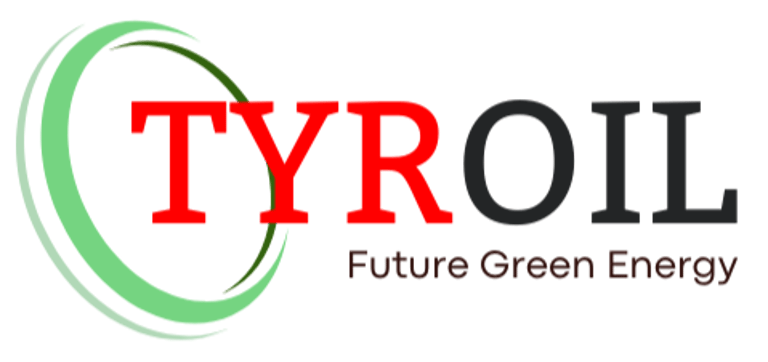The Bio-Integrated Future: TPO and rCB in Sustainable Biotechnology and Bioremediation
THE STORIES
TYROIL
7/17/20253 min read


Our planet faces complex environmental challenges, from widespread pollution to the urgent need for sustainable resource management. While technological innovations often grab headlines, a quiet revolution is unfolding at the intersection of waste management and biology. What if discarded tires, a symbol of our linear economy, could become allies in healing our ecosystems and fostering new bio-based industries? This is the fascinating promise of Tire Pyrolysis Oil (TPO) and recovered carbon black (rCB) in the realm of sustainable biotechnology and bioremediation, paving the way for a truly bio-integrated future.
At first glance, the connection between industrial waste and delicate biological processes might seem tenuous. However, the unique properties of carbon-based materials, combined with the power of microorganisms, are creating novel solutions for environmental cleanup and resource recovery. TPO and rCB, derived from the thermal decomposition of end-of-life tires, offer a sustainable source of carbon that can be engineered to interact synergistically with biological systems [1].
Microscopic Allies: rCB in Bioremediation
Bioremediation harnesses the power of living organisms, primarily microorganisms, to degrade or detoxify pollutants in soil, water, and air. For bioremediation to be effective, microorganisms often need the right conditions and a suitable environment to thrive. This is where rCB, particularly in its activated carbon form, can play a crucial role.
Microbial Support and Enhancement: rCB, with its porous structure and high surface area, can act as an excellent support material for microbial growth. It provides a stable habitat for bacteria and fungi involved in breaking down contaminants. Imagine a polluted site where rCB is introduced, creating microscopic homes for beneficial microbes, accelerating the natural process of detoxification. This can be particularly effective for degrading organic pollutants or even certain heavy metals [2].
Adsorption and Biodegradation Synergy: rCB can first adsorb pollutants onto its surface, concentrating them and making them more accessible to the microorganisms. This combined approach – adsorption followed by biodegradation – can significantly enhance the efficiency of remediation efforts, especially for complex or recalcitrant contaminants. This synergy means faster cleanup times and more complete degradation of harmful substances.
TPO Derivatives: Fueling Sustainable Bioprocesses
TPO, a complex mixture of hydrocarbons, also holds potential in sustainable biotechnology, albeit often through its refined derivatives. While direct use in biological systems is limited due to its complexity, its components can be transformed into valuable inputs for bioprocesses:
Carbon Sources for Fermentation: Certain fractions or purified compounds from TPO could potentially serve as carbon sources for industrial fermentation processes. This means that microorganisms could be fed TPO-derived nutrients to produce valuable biochemicals, biofuels, or even bioplastics. This would represent a significant step towards decoupling biotechnology from fossil-based feedstocks, creating a truly circular bioeconomy [3].
Bio-based Material Precursors: As discussed in previous articles, TPO can be refined into chemical feedstocks. These feedstocks could then be used to synthesize bio-based polymers or other materials that are compatible with biological systems, potentially for applications in tissue engineering, drug delivery, or sustainable packaging.
The Symbiosis of Waste and Life Sciences
The integration of TPO and rCB into sustainable biotechnology and bioremediation represents a powerful symbiosis between waste management and life sciences. It challenges the traditional linear model of production and consumption, demonstrating that discarded materials can be re-integrated into natural cycles to create value and heal the environment. This approach aligns perfectly with the principles of ecological engineering, where human-designed systems work in harmony with natural processes.
This bio-integrated future is not just about cleaning up pollution; it's about creating new economic opportunities in the green sector, fostering interdisciplinary research, and ultimately, building a more resilient and regenerative planet. By harnessing the power of both waste and biology, we are unlocking innovative solutions that can address some of humanity's most pressing environmental challenges.
From supporting microscopic allies in polluted soils to fueling the production of bio-based materials, TPO and rCB are proving to be invaluable components in the quest for a sustainable future. The next time you see a discarded tire, imagine it not as an end, but as a vital link in the intricate web of life, contributing to a cleaner, healthier, and more bio-integrated world.
More Related Articles:
The Future is Circular: Policy, Innovation, and the Evolution of the TPO Business
The Circular City: How Tire Pyrolysis Supports Urban Sustainability
Beyond the Barrel: The Versatile Future of Tire Pyrolysis Oil (TPO) Applications
From Lab to Large Scale: The Journey of Pyrolysis Technology to Global Impact
References:
[1] ScienceDirect. (2022). Tire pyrolysis char: Processes, properties, upgrading and applications. Retrieved from https://www.sciencedirect.com/science/article/pii/S0360128522000314
[2] MDPI. (2024). Enhancing Uptake Capability of Green Carbon Black Recycled from.... Retrieved from https://www.mdpi.com/2079-6412/14/4/389
[3] Taylor & Francis. (n.d.). TPO – Knowledge and References. Retrieved from https://www.tandfonline.com/doi/full/10.1080/01932691.2023.2201948
